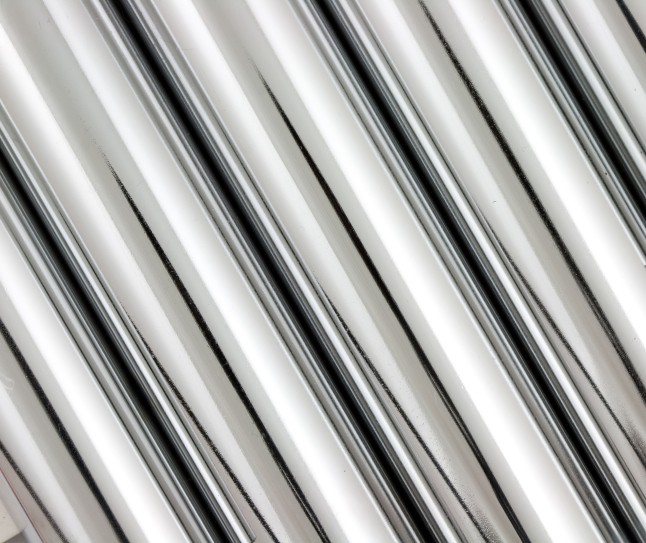Tubular stamping, or “tube stamping,” is a patented method for making tubular work pieces by using a series of stamping operations.
The tubular stamping process begins with a blank punched from a coil of sheet metal. The preformed blank is then moved into a die that forms it into a “U” shape. The U-shaped piece of metal then undergoes another stamping operation that rolls the legs of the U toward one another, closing it into a roughly tubular shape. Another tool then completes the roll, delivering a usable tubular component.
Once this initial work piece has been formed, additional stamping can be used to force the piece’s edges together even more, tightening the seam until it all but disappears. Or, further stamping can be used to customize work pieces into asymmetrical tubular shapes or to subject them to supplemental operations such as coining. Work pieces that have been formed initially through tube stamping can also be used as starting work pieces for other metal forming operations, such as hydroforming or machining.
In a tube stamping production line, movement of a work piece from one station to another can be accomplished through either hand transfer or progressive tooling. With at least four stamping stations in any tube stamping operation, any means of automating the tubular stamping operation will inevitably increase the production rate and cut labor costs. Nevertheless, even tube stamping assembly lines that rely on manual transfer can be more cost effective than other tubular metal forming options because of the inherent speed of tube stamping and the low cost of the sheet-metal material it relies on.
Tube Stamping vs. Other Metal Forming Processes
Compared to other metal forming processes used to produce tubular components, such as roll forming, hydroforming, casting, and machining, tube stamping offers the following advantages:
- Tube stamping works with less-expensive flat stock metal, rather than solid or welded tube stock.
- Tubular stamping can be used to create complex shapes that would otherwise have to be made from solid or welded tube
- Tube stamping produces relatively little waste when compared to other metal forming methods.
- Parts created through tubular stamping are generally lighter than parts created through metal forming methods other than hydroforming.
- When contrasted with other tubular metal forming processes that proceed from flat stock, such as roll forming, tube stamped products are more tightly seamed.
Metal Products that Can Be Tube Stamped

By incorporating punching and welding into the tubular stamping process, a tubular stamping production line can create complex parts such as this automotive exhaust component.
Tube stamping can be used to make simple tubular parts such as axles, tubular frames, or handles. More advanced production lines can also be designed to make complex tubular parts such as exhaust components and threaded bolts. Asymmetrical tubular parts, such as appliance handles and oven vent tubes can also be tube stamped.
As far as tube stamping’s potential for making asymmetrical parts is concerned, a good example is a stainless steel appliance handle. Furthermore, parts like appliance handles that require quality finishing can benefit from tubular stamping since tubular stamping operations can be configured to work with pre-polished or pre-painted materials, greatly expediting the finishing process and reducing finishing costs.
Tube Stamping’s Potential

This stainless steel refrigerator handle is a good example of an asymmetrical tubular part made with tubular stamping. It also illustrates tubular stamping’s capacity to work with pre-polished or pre-painted materials, expediting finishing and minimizing costs.
Tube stamping is a relatively new metal forming process that opens up a lot of possibilities and forces us to reconsider how we manufacturer tubular metal parts. Its extraordinary versatility makes it a one-stop solution in many cases, but it can also be combined with other metal forming processes to produce ambitious products and amazing results. Compatible with high-strength steel, draw-quality steel, stainless steel, aluminum, copper, brass, martinsite, and other alloys, tubular stamping promises to reduce costs and expedite production across a wide range of projects, given the right circumstances.
To learn more about tube stamping and its potential, please download our white paper, “An Introduction to Tubular Stamping.”


